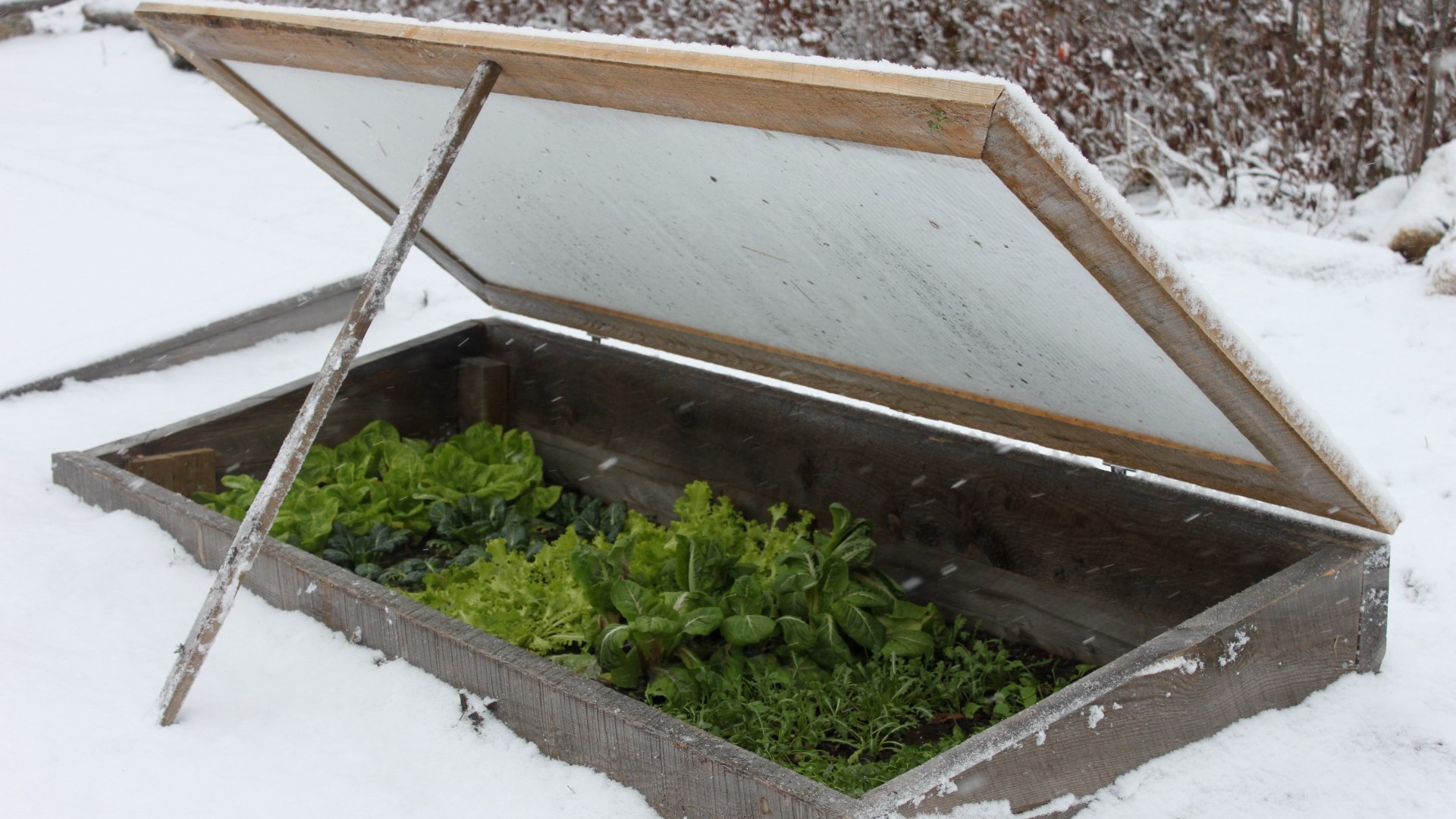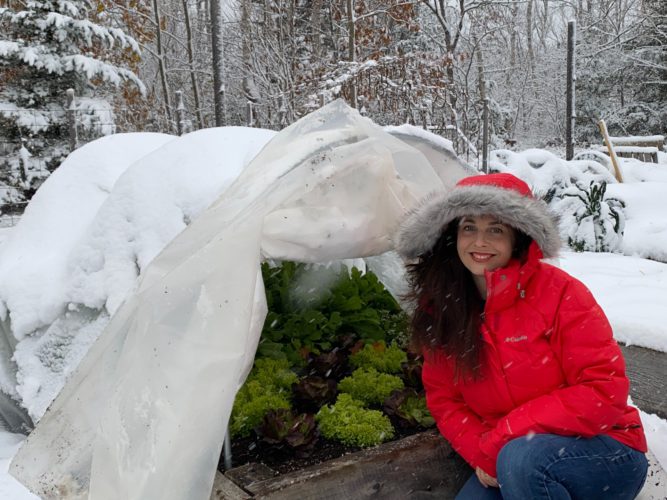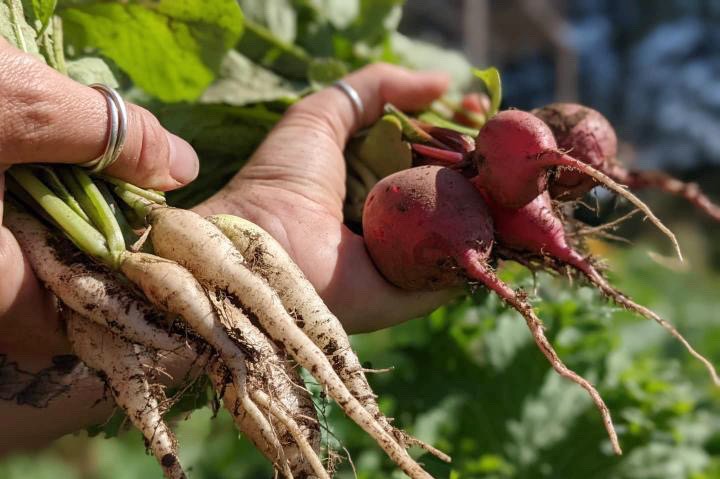Interest in vegetable gardening on the rise in Nova Scotia as food prices increase
Winter garden could help defray expensive grocery bills

caption
A cold frame with a clear top and bottomless structure, allows Niki Jabbour to harvest salad greens throughout the winter.As a lifelong gardener, Stephen Farley was conscious of food security and rising food prices before the pandemic started.
Forecasts from Dalhousie University’s recent Canada’s Food Price Report expecting the cost of vegetables to rise between five and seven per cent in 2022 only added to his concerns.
Farley’s been growing food in his backyard since he moved to Nova Scotia nine years ago, and says the winter is prime planning time for the next growing season.
Niki Jabbour is an award-winning author and year-round vegetable gardener who says that more people are looking to grow their own food due to recent concerns over increasing food prices and available stock at grocery stores.
Recent analytics from Jabbour’s website, Savvy Gardening, show visitors primarily looking for food gardening and basic gardening information.
She recommends growing high-yield and high-value crops to people primarily concerned with food costs and availability. These crops are more expensive to buy in grocery stores than they are to grow.
“The number one answer for (those) is salad greens. You can grow arugula in 30 days and lettuce in 40 to 45 days. So, I think people are looking for some of those expensive vegetables, like salad greens, that they can easily grow in a container or a raised bed,” said Jabbour.

caption
Niki Jabbour in front of her winter lettuces protected inside a mini hoop tunnel structure.At the onset of COVID-19, gardening started booming. According to the 2020 Canada-wide study from Dalhousie’s Agri-Food Analytics Lab, 67 per cent of new gardeners attributed the pandemic as a reason for starting to grow food at home.
Respondents to the 2020 study showed that 53.9 per cent of new home gardeners were worried about food shortages.
Jabbour saw the pandemic gardening trend affect her website, with four times the amount of traffic per month in 2020 than in previous years. Early in the pandemic, “people weren’t sure if the food supply chain would hold or if they would have shortages of certain types of vegetables or fruits,” says Jabbour.
“Now that we’re seeing food prices rising dramatically, the interest in food gardening is definitely starting to go up again.”
For Nova Scotians sharing these concerns and starting their gardens for the first time this year, Emily Tregunno from Halifax Seed recommends “starting small and with foods that you already like.”
She said microgreens are a great entryway crop because they are quick growers, harvestable in 10-14 days, and pack “a nutritional punch.”
“It’s hard to dictate if the inflation of food costs will add an additional (sales) bump in the lawn and garden sector,” says Tregunno. However, she says when the grocery store shelves were empty, they heard from customers who were concerned about the availability of produce, like fresh greens and tomatoes.

caption
A gardener harvests white icicle radishes and red radishes for a farmers market in August 2021.Farley started a YouTube channel in 2019, the Optimistic Gardener, that provides ideas for DIY garden projects and seasonal growing tips.
One of his recent videos, It’s time for winter sowing, explores a method of giving cold weather crops a head start by creating mini greenhouses for the seeds using recycled four-litre plastic water bottles.
For beginner gardeners, it is important to know how much space is available for growing, and “the most important thing is understanding what you want to grow,” says Farley. “You want to grow what you eat.”
Once a gardener knows what space is available for growing and what they want to eat, the next step of rummaging through seed catalogs is exciting.
